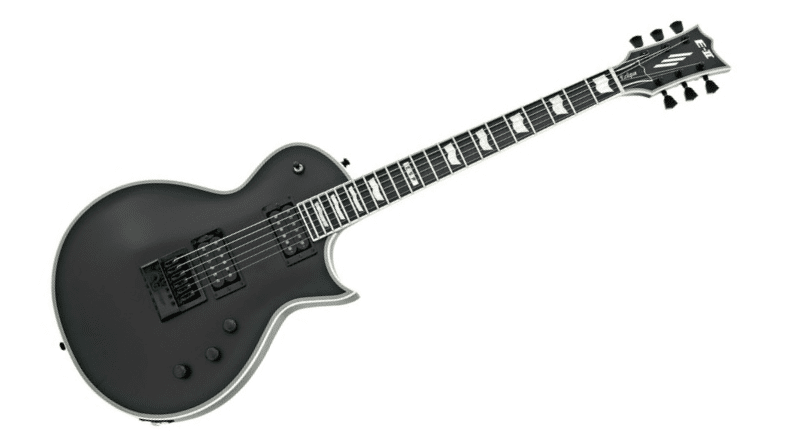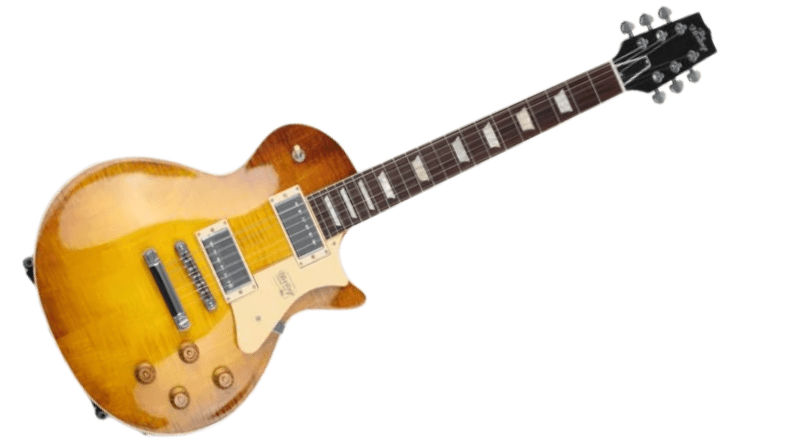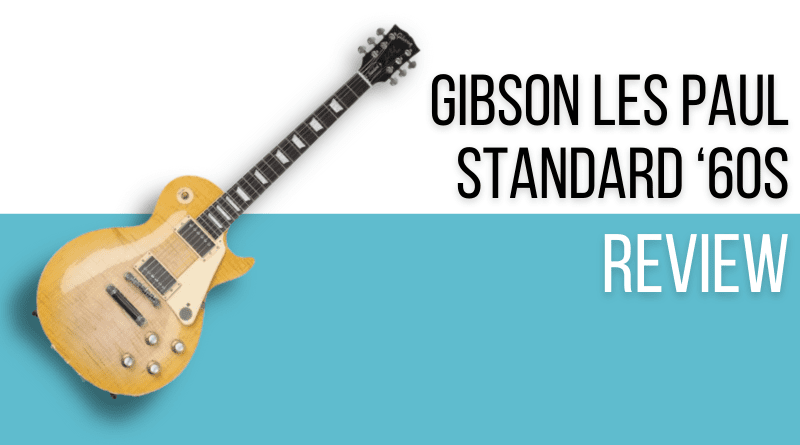In the years since its first introduction, the Gibson Les Paul has continually evolved to meet the changing needs of its players. Some iterations were much more well received than others, and those models either remained in production, or have been brought back by popular demand.
Take for example, the Gibson Les Paul Standard ‘60s. This isn’t quite a reissue, but it’s inspired by the Standard model made throughout the 1960s, which remains a highlight decade for both Gibson as a whole, and the Les Paul in particular.
In this KillerGuitarRigs Review, we got our hands on one of these incredibly popular Les Pauls. We put it through the ringer to find out whether or not this model is indeed “peak Les Paul”. Keep on reading to find out!
Read more about our review process.
Contents
Who Is This For?
The Gibson Les Paul Standard ‘60s is a high end guitar aimed at serious players and professional musicians. Although, it’s still a forgiving enough model that less experienced guitarists could play it comfortably, but the price tag may be prohibitive for the average novice.
Like most Les Pauls, the Standard ‘60s is a super versatile guitar, so whether you play jazz, metal, or anything in between, you’ll find the tones you’re looking for.
Appearance / Features / Controls
We were fortunate enough to receive our test model in what we think is the best finish of all – Lemon Burst. If you’d prefer another finish, the Standard ‘60s is also available in Bourbon Burst, Heritage Cherry Sunburst, Iced Tea, and Unburst.
They all look great, but the Lemon is truly special. As expected, the finish was spectacular, with the nitro lacquer providing a gorgeous feel and perfectly complementing the color. Being nitro, it will age with time and use, and will eventually take on a superb vintage patina.
The body was made using the classic Les Paul formula – mahogany body with a nice slab of AAA flamed maple to cap it off. The test model was a bit of a behemoth, weighing in at close to 11lb, something to be conscious of if you have back issues.
The set neck was also made from mahogany. It came with a slim taper profile, which made it comfortable in all positions up and down the fretboard. This is in direct comparison with the Standard ‘50s model which comes with the notorious vintage ‘50s profile, a neck famed for its extreme girth.
It had one of the nicest rosewood fretboards we’ve had the opportunity to play in any of our reviews. It was smooth, and had an extremely pretty grain pattern. The edges of the fretboard were bound, and the frets themselves were nibbed, which is a classic Gibson touch. It obviously takes more time and effort to make a guitar this way, but the result is incredible feel and playability.
The hardware was all of the highest quality, with stainless steel used throughout on the stopbar tail piece, the tune-o-matic bridge, and also on the fantastic Grover Rotomatic tuners.
It was loaded with a pair of ’61 Burstbucker humbucking pickups, with a 61R in the neck and a 61T in the bridge. As for the rest of the electronics, it featured the standard 3 way toggle switch, and 2 volume and 2 tone knobs. It comes right from the factory with components that would be considered upgrades to many, including matched potentiometers and even orange drop capacitors.
Performance / Sound
It’s always a pleasure to play a Gibson Les Paul, but this model in particular was a real treat. Playability was as good as we expected, with the satin finish on the Slimtaper neck keeping things smooth, and lightning fast. The only let down, as briefly mentioned earlier was the weight. At 10lb 11oz, it was definitely noticeable when wearing it on a strap. If you’re going to gig with one of these we highly recommend getting the widest strap you can find.
The factory setup was just as we like it – low, and well radiused. We didn’t find any fret buzz, and nor did we experience any finger fatigue of intonation issues from over bending the strings as we played.
The 61 Burstbuckers in this LP delivered big on everything that continues to make original ‘60s models some of the most sought after guitars in the world. The low end was smooth and warm, particularly up in the neck position with volume rolled back.
In the mids we got hard rocking crunch that just screamed when paired with a Marshall DSL40C. At the top end in the upper registers we found that it retained clarity at all volumes, and never came off as brittle or harsh.
Part of the accurate delivery of vintage tone is also down to the period correct construction of the electronics as a whole, with hand wiring used throughout, and unmatched winding on the bobbins creating that ear pleasing, slightly out of phase sound. The Orange Drop capacitors delivered the consistent tone we’ve come to expect from them, and the performance of the matched pots gave us incredible tonal variety when we wanted to change up the response.
Other Guitars to Consider
The Gibson Les Paul Standard ‘60s is one of the finest guitars at its price point, but when spending that much money on an instrument, it definitely pays to compare it to some alternative options.
ESP E-II Eclipse Evertune

The ESP E-II Eclipse Evertune is a Les Paul style guitar with a lot to offer. While ESP are motly known for metal-focused guitars, the Seymour Duncan Pegasus bridge, and Sentient neck pickups provide a classic PAF style voicing, just like the Burstbuckers in the Gibson. It’s a great option if the weight of the Gibson would cause issues for you, as it tips the scales at just under 8lb.
Heritage Standard H-150

You may not have heard much about Heritage, but they make some serious guitars, with a focus on build quality, tone, and playability rather than flashy marketing. This model, the Heritage Standard H-150, looks incredibly similar to the Les Paul, and even comes in a Lemonburst finish, although with the Heritage, it’s called “Dirty Lemonburst”. It offers a more boutique approach to the classic Les Paul that might interest those looking for a quality guitar that stands out in a crowd.
Final Thoughts on the Gibson Les Paul Standard ‘60s
The Gibson Les Paul Standard ‘60s performed every bit as well as we would have expected it to. We really loved the feel and playability provided by the Slimtaper neck, which has become one of our all time favorites. The extreme weight of this particular guitar might be an issue for some, but it’s a well established fact that vintage style Les Pauls are heavy, so this came as no surprise.
Overall, the Les Paul Standard ‘60s does come highly recommended if you’re looking for a guitar with versatile tones, classic styling and high residual value. Without stepping up to a custom shop model, this is about as good as it gets!


